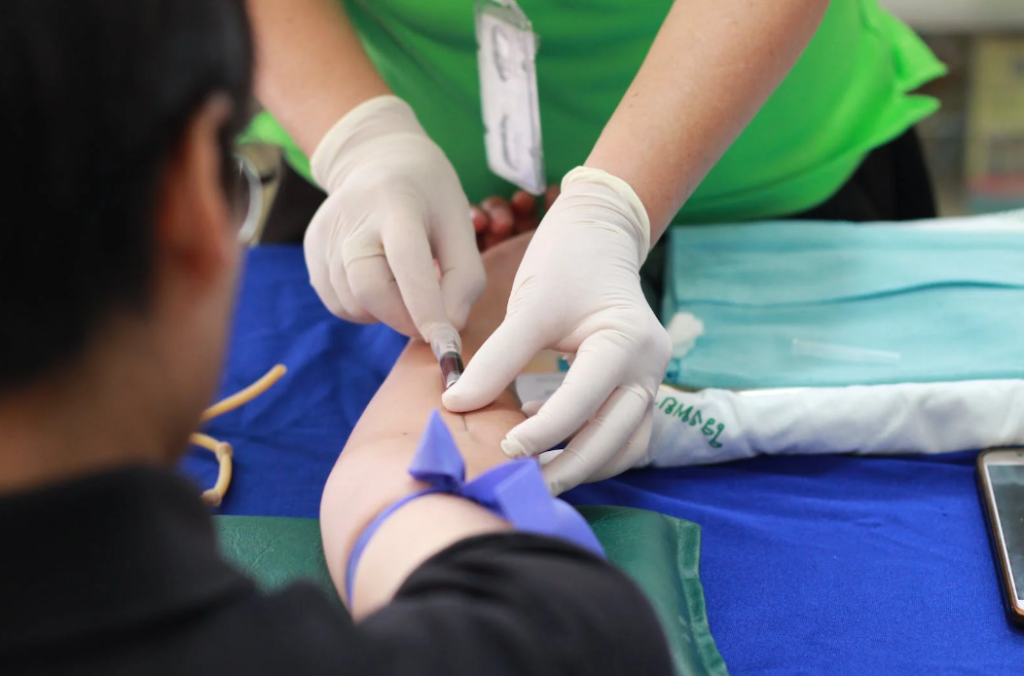Mental Health For Adults
Adults should learn about mental health in order to be aware of common mental illnesses and the various treatment options available.

Selfpause Affirmation App
Download the app to get 1,000’s of affirmation meditations and everything you need to write, record and listen to your own.
Mental health for adults includes many different facets. There are several common mental illnesses and a wide variety of treatment options available. In this article, we’ll look at some of the most common conditions, their symptoms and treatment options, and ways to prevent and manage them. We’ll also discuss how to identify mental illness and how to find help if you suspect you have a problem.
Common mental illnesses

Common mental illnesses affect approximately one in six people in the general population. Of those, about half have significant symptoms. Most have non-specific mixed depressive and anxiety symptoms, but some have specific depressive or anxiety disorders. These prevalence rates are affected by a number of factors, including age, gender, race, ethnicity, and socioeconomic status.
Many adults with common mental illnesses are treated in primary care, rather than by a mental health specialist. For example, more than 60 percent of adults with major depressive disorder saw a general practitioner before seeing a psychiatrist or therapist. This shows that primary care is a critical locus of treatment for mental illnesses, though many patients never receive a proper diagnosis.
Adults can develop mental illness at any age, and the symptoms can vary from mild to severe. Some of these illnesses can be treated and many people return to full functioning. While mental illness is not a life-threatening condition, it can affect a person’s ability to live a normal life.
Often, mental illnesses first manifest themselves in childhood. About 50 percent of people will develop a mental illness by age 14 and 75 percent by the age of 24. These illnesses range from attention deficit hyperactivity disorder to anxiety and mood disorders. Fortunately, the majority of these disorders can be treated successfully. The lag between diagnosis and treatment can be several years.
Diagnosis

Despite the stigma, the early identification of mental health problems is important. Early treatment can help individuals cope with the symptoms and recover from their disorder. In many cases, behavioral therapies or medications can be effective, as can counseling. Many factors influence mental health, including exposure to stressful circumstances and genetics.
A diagnosis is crucial for health insurance providers and for obtaining job protection under the Americans with Disabilities Act. Although a diagnosis does not cure the symptoms, it does put you on the road to getting treatment and protecting your rights. Taking the time to understand what your doctor is saying will give you more insight into how to cope with your diagnosis.
During a diagnosis, a mental health professional will ask questions about symptoms, conduct physical tests, and perform psychological evaluation tools. Sometimes, they will ask a family member to participate in the interview. Often, a mental health professional will also order a series of laboratory tests or complete a questionnaire to get an accurate picture of the symptoms. Diagnosis can sometimes take more than one visit, since symptoms vary from person to person.
Mental health is a major concern for many Americans. Almost one-quarter of adults in the United States have a diagnosis of a mental illness. While the majority of adults report emotional distress, access to services is often a barrier for these individuals. However, in general, U.S. adults are the most likely to be diagnosed with a mental health disorder by a doctor, and nearly one-quarter of those adults reported receiving a mental health diagnosis in 2016.
Treatment

There are many forms of treatment for mental health in adults. One of the most common types is talk therapy. Talk therapy involves talking about problems with a mental health professional. It also involves an educational component and can include stress management and relaxation exercises. Two major types of talk therapy are dialectical behavior therapy and cognitive behavioral therapy. It can be performed one-on-one or in a group setting. Sometimes, family talk therapy can also be helpful.
Psychosocial support and self-help are often a key part of treatment. Support groups are available in many communities and on the internet. National organizations that offer support for people with mental illness include the National Alliance on Mental Illness (NAMI). Having supportive family members and friends is also important. It is also important to ask for help when you need it. Be honest and open with your family about your condition.
Talk therapy is an effective way to discuss your issues with a mental health provider. A therapist acts as a neutral mediator and can help you develop coping strategies. Some people may need intensive treatment and stay overnight in a treatment facility, while others may be able to participate in a daytime program. For people who have serious mental illnesses, there are also psychiatric hospitals that can offer 24-hour care. Other treatments include residential treatment, which provides a temporary supportive living environment.
Treatment for mental health for adults includes addressing co-occurring disorders. In one recent study, only 9.1 percent of adults with co-occurring disorders received treatment for both. This figure is a large gap, indicating that the rates of treatment for substance use and mental health disorders are not comparable.
Prevention
The prevention of mental health problems for adults requires a multi-pronged approach. These approaches involve prevention in a range of contexts, including the community, school, and primary care settings. These programs help those who are at risk or are already suffering from mental health problems stay healthy. Prevention efforts can also involve early intervention to reduce the impact of mental ill health.
One of the most important aspects of prevention is screening. Subthreshold psychiatric symptoms are common in the population and can debilitate a person and increase their risk of developing a psychiatric disorder within a few years. In other words, screening for symptoms of these conditions is important for early intervention.
Early interventions for prevention target the development of harmful factors and aim to alter the developmental path to full-threshold disorders at a premorbid stage. Several risk factors have been identified, including parental mental illness and obstetric and maternal complications. Other risk factors include childhood adversities, ethnicity, and the impact of the urban environment on mental health. Furthermore, low levels of vitamin D may contribute to poor cognitive functioning, which has been linked with low premorbid intelligence quotient.
Prevention of mental health problems for adults has several forms, based on different goals. Primary prevention focuses on preventing the onset of illness, while secondary prevention focuses on early detection and intervention. Tertiary prevention targets advanced recovery and the reduction of relapse risk.
Asperger’s syndrome

Asperger’s syndrome is a condition that causes a person to have trouble understanding social conventions. As a result, they struggle to make friends and are not good at reading social cues. They may also have difficulty making eye contact and show little to no emotion.
People with Asperger’s syndrome may need individual or group therapy to deal with their symptoms. They may also need help managing their anger or anxiety, or the effects of bullying and social rejection. While they may appear socially withdrawn, people with AS often possess strong vocabulary skills and strong attention to detail.
Asperger’s symptoms typically appear in early childhood and often include avoiding eye contact, feeling uncomfortable in social settings, and having a difficult time responding to people. These symptoms are different from shyness, as the person with AS lacks the ability to read social cues. In addition to not understanding emotional reactions, they may also be hypersensitive or hyposensitive to sensory stimuli.
While children with AS often have the same symptoms as adults without AS, their cognitive and emotional development differs significantly from that of their peers. As a result, their experiences may have a profound effect on their mental health. Numerous cross-sectional studies have investigated the prevalence of depression and anxiety disorders in people with AS. Depression and anxiety are closely related, and high levels of anxiety can predispose an individual to developing depression. However, the findings of these studies are limited because they are cross-sectional and do not include studies that measure severity or the etiology of depression.
Bipolar disorder

Bipolar disorder treatment includes a variety of techniques. Cognitive behavioral therapy focuses on identifying and changing unwanted patterns of behavior, while psychoeducation aims to increase awareness of the disorder and its treatments. Psychoeducation also helps people recognize early symptoms. Interpersonal and social rhythm therapy helps patients regulate their daily habits, which can reduce the frequency and severity of episodes.
The first step in getting the right diagnosis and treatment for bipolar disorder is to talk to a doctor. The doctor may do a physical exam and order tests to rule out other medical problems. Once the doctor has ruled out other medical problems, they may suggest a mental health evaluation. They may also refer you to a trained mental health care provider with experience in treating bipolar disorder.
Bipolar disorder is a lifelong condition that requires proper treatment. It can cause a range of symptoms such as mania and depression. The symptoms can cause significant distress and difficulty in the person’s life. While the disorder is not curable, it can be managed with medications and psychological counseling.
When it comes to treatment, the goal is to improve the quality of life for people suffering from bipolar disorder. Treatment can be lifelong and requires consistent adhesion to a prescribed schedule. Establishing a routine helps people identify changes in their moods and sleep cycles.
Our Top FAQ's
Some common mental health issues that adults may face include anxiety disorders, depression, bipolar disorder, and post-traumatic stress disorder (PTSD). Other common issues may include obsessive-compulsive disorder (OCD), phobias, and eating disorders.
There are many effective ways to manage and improve mental health in adults. Some strategies may include: seeking professional help from a mental health provider, participating in therapy or counseling, engaging in self-care activities such as exercise and good nutrition, practicing stress-reduction techniques such as meditation or mindfulness, and maintaining a strong support system of friends and loved ones.
Adults can recognize that they may be experiencing a mental health problem by paying attention to their thoughts, emotions, and behaviors. Some signs to watch for may include persistent feelings of sadness, hopelessness, or worthlessness; difficulty with daily activities and responsibilities; changes in appetite or sleep patterns; difficulty concentrating; and thoughts of self-harm or suicide. If you are experiencing these or other concerning symptoms, it is important to seek help from a mental health professional or trusted friend or family member.
Lifestyle factors such as diet, exercise, and sleep can have a significant impact on mental health in adults. A healthy diet that includes a variety of fruits, vegetables, and lean proteins can help to support mental well-being. Regular physical activity can also improve mood and reduce stress. Adequate sleep is essential for good mental health, as it helps to repair and restore the body and mind.
Family and friends can support the mental health of an adult who may be struggling by listening to and supporting them, encouraging them to seek professional help if needed, and offering to help with daily tasks or responsibilities. It is also important to be understanding and non-judgmental, and to respect the individual’s privacy and autonomy. If you are concerned about someone’s mental health, it can be helpful to gently suggest that they seek help and offer to support them in finding the resources they need.
